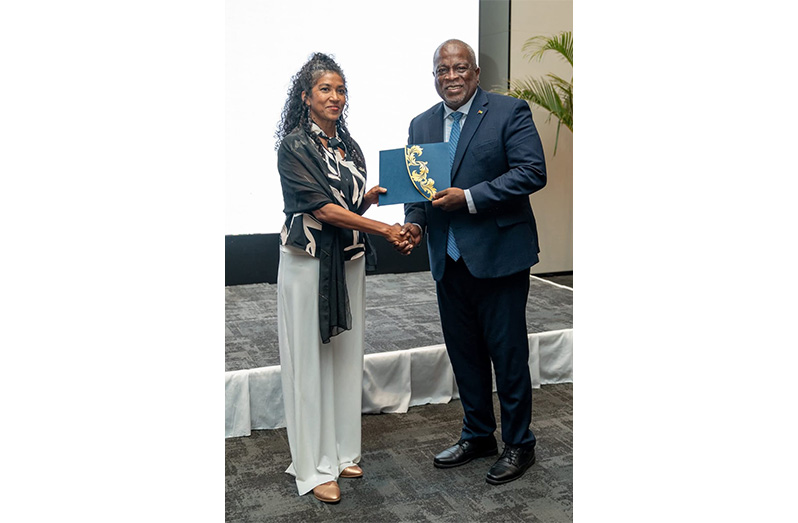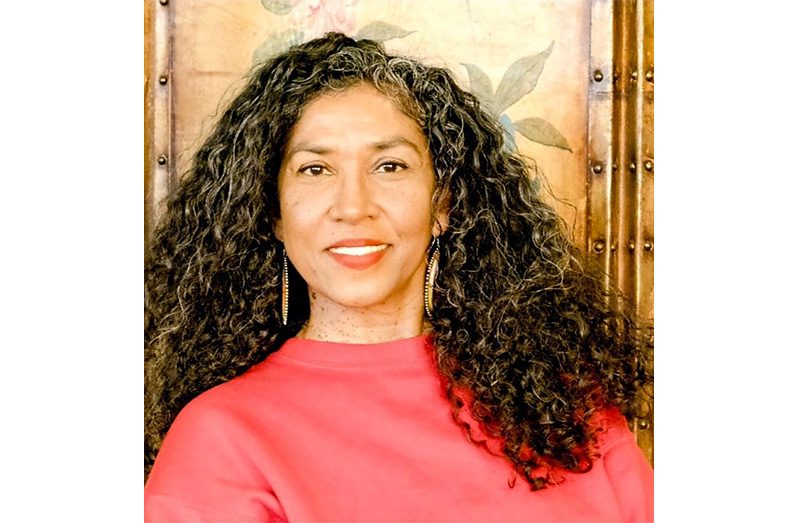Guyana Prize for Literature winner Oonya Kempadoo on her immersive work and the evolving future of Caribbean storytelling
Storytelling has long been one of the most powerful tools for preserving culture, especially in the Caribbean. Stories of folklore, family traditions, and ancestral memory have passed from one generation to the next, crafting a continuous narrative rooted in lived experience. But like nearly everything today, technology is reshaping how we tell those stories. In recent years, there has been a significant shift in Caribbean storytelling, with film, multimedia, and immersive formats taking centre stage. At the forefront of this evolution is Oonya Kempadoo.

Revered as a writer, inter-arts storyteller, and project director, Kempadoo is reimagining what Caribbean narratives can look, sound, and feel like. Her latest work, Naniki, blends prose, poetry, sound, and visuals into an experience that challenges the very definition of literature. This week, Kempadoo spoke with Pepperpot Magazine from her home in Montreal, Canada, about winning the Guyana Prize for Literature, creating an immersive Caribbean storytelling experience, and her hopes for the future of Caribbean literature and cultural expression.
Coming Full Circle: The Guyana Prize for Literature and Returning Home
Kempadoo is a UK, Guyanese, and Grenadian citizen, and a permanent resident of Montreal, Canada. She is the author of four novels and is critically acclaimed on both sides of the Atlantic. Her semi-autobiographical first novel was longlisted for the Orange Prize and translated into six languages. Her second was longlisted for the IMPAC Dublin Literary Award and won a Casa de las Américas Prize.
Kempadoo is a US Fulbright alumna, has taught creative writing in the USA, led workshops in the Caribbean and at the Quebec Writers’ Federation, and has served on several award juries including the Commonwealth Short Story Prize, Scholastic Art & Writing Awards (USA & Canada), and the Canada Council for the Arts. She is co-founder of the Grenada Community Library and the writing facilitator and editor of The Grenada Chocolate Family, the first children’s chocolate book written by children of colour in a cocoa-growing country, which won Gourmand’s ‘Best in the World’ award.
Her latest novel of speculative fiction and recent winner of the Guyana Prize for Literature, Naniki, is part of an eco-social story project that she has produced and directed as an immersive multimedia and live performance experience, supported by Canadian public funds. Recounting her experience winning Best Book of Fiction, Kempadoo calls it a full-circle moment: “This story, Naniki, I wrote it in Grenada. I started it in Grenada, I finished it in Montreal, but it goes all up the Caribbean chain of islands and returns to Guyana. So for me, it was significant and meaningful that the recognition for it comes from Guyana.”
More than just a win, her participation in the Guyana Prize also marked a decade since she last returned to Guyana, an experience Kempadoo describes as both unique and enriching. She was impressed by the raw talent of young writers:
“I was pleased to see the youth awards, and the young writers involved in the workshops. The inclusion of Caribbean authors as jury members, as providers of workshops, and the interaction with young Guyanese writers—I think is great. That, for me, was really the highlight of my experience.”
She also praised the Right to Stage initiative by the Ministry of Culture: “To see the amount of young theatre talent and ambition… It was really great.”
Naniki: Immersive Storytelling
Originally, Kempadoo did not set out to create Naniki as a novel, but rather as an experience. The word Naniki, meaning “active spirit” in the Taino language, forms the title of a cross-platform story project authored by Kempadoo. It is published as a Caribbean-futurist novel (Naniki, Rare Machines, Dundurn Press, Toronto, Jan 2024) and produced as an immersive and live-performance experience.
“I didn’t set out to write this as a book, because it’s a story to me that really begs to be interacted with as an experience, rather than a literary, on-the-page experience.”
“It’s very different in style to my other works, which are more conventional novel form. This is really a combination of poetry and prose. It’s quite abstract. It’s very metaphorical—more of a fable tale style.”
Her shift to multimedia storytelling was gradual, but her core values remain unchanged. Whether an immersive live performance or a novel, storytelling remains at the heart.
“The sound and visual elements of the story have always been important for me. That is just sort of hinted at in my early work. In Tide Running, I use the soundtrack of Buju Banton and contemporary music of that time as the soundtrack in my head.”
“The transition from literary creative writing—where the soundtrack and the images were all in my head—to putting it down digitally and bringing that together has been a huge learning journey for me, and a very enjoyable one.”
The underwater scenes in Naniki’s performance element have drawn particular praise:
“In researching images of people underwater, it was hard to find Black people underwater. And then when you think of our relationship with water, it’s not a very friendly one.”
“Working in a white culture with persons who didn’t understand that different relationship with water made me motivated to film Black people underwater.”
“We did it in a pool in Montreal to make it look like the sea. It was a new experience for everybody involved in the production. It became the strongest content that we have. It was very beautiful, very magical.”
Bridging Art Forms: New Caribbean Narratives
Although different from her earlier works, Naniki may be more relevant than ever, particularly as the Caribbean and wider world focus on environmental sustainability. Naniki compels audiences to reflect on their connection with nature.
“The takeaway is really for us to reflect on our own connection with the elements—with nature. So air, water, or land—to be able to think of ourselves as elemental beings. What is your Naniki? What is your animal species that is your relative, that you care about, that you can begin to learn more about or help to protect?”
Naniki also addresses cultural gaps in literature and media. The use of Indigenous language was intentional. “We have forgotten the first people of the region and the Caribbean, and we still marginalise the Indigenous people of the Caribbean. So bringing that language and culture to the forefront was intentional.”
On the broader evolution of Caribbean storytelling, Kempadoo says, “I’m excited to see the development of storytelling in film and video. The spoken word and poetry also have grown and are meaningful. Festivals have done a lot for developing an interest in writing and literature.”
“I would like to see the connection to film, more to theatre, more to even carnival arts, which I see as our Indigenous storytelling.”
She’s not just observing—she’s actively working on expanding her story’s format. “I’m working on how to reformat this production so that it can move around sustainably. That’s a big challenge. I put so much effort into this production, I’m very conscious of environmental issues and sustainability…I’m also working on a VR group experience version of Naniki with a film company.”
Oonya Kempadoo’s work, through Naniki and beyond, signals a bold and imaginative direction for Caribbean storytelling. Her commitment to innovation, cultural reclamation, and environmental consciousness brings new energy to the literary and artistic landscape. As storytelling evolves across platforms and generations, voices like Kempadoo’s ensure that the Caribbean remains not only rooted in its traditions but also creatively equipped for the future.



.jpg)










